Amenhotep IV (Amenofis IV, Akhenaton) (1352. – 1336.)
The period of Akhenaton in Egypt, because of its conflict with the Theban clergy, religious reforms and political moves are considered as a special period in the New Kingdom. His religious reform was prompted by the conflict of authority and Theban clergy. Cult of Aton (Aten) was introduced as a deity. He is represented as a solar disk whose hands are offering a symbol of life (ankh). Aton was not Pharaoh’s fabrication of imagination. He is a divine who was first mentioned in the Amenhotep II period and in the Middle Kingdom in the Sarcophagus. Special mystery was Pharaoh’s wife Nefertiti (Nefer-Nefru-Iten “Beauties of Aton”).
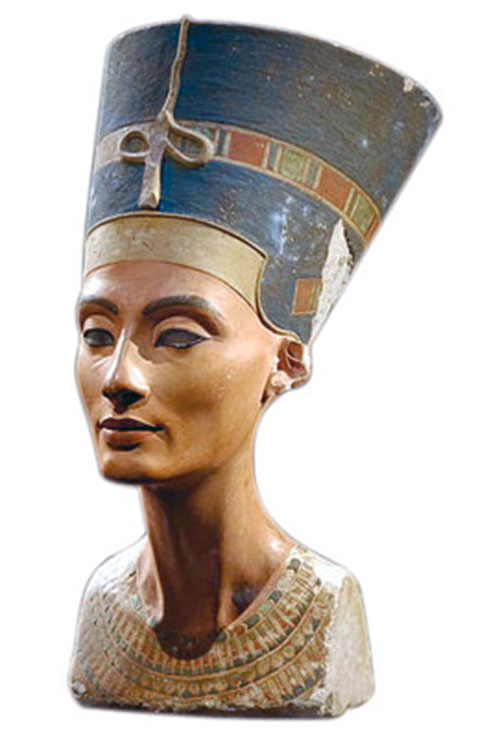


Some historians thinks she was a princess of Mitanni which Amenhotep III received as a gift. She was even connected with the princess Tadukhipa (“the one that came”) because it is obvious that the name Nefertiti, received when she married Akhenaton. It is also questionable whether Akhenaton came to power after the death of his father, or he was co-ruler, since it is known that Amenhotep III died very old and sick. Akhenaton built desert town Akhenaton and then he moved capital from Thebes there. Town was on the same place where today stands the archaeological site of Tell el Amarna in Central Egypt. In the city’s archives, archeologists found three hundred clay tablets with inscriptions in cuneiform. It is a diplomatic correspondence of the Egyptian’s court with Middle Eastern rulers during Amenhotep III reign. Soon in the new town, people developed a ruling class and only several names of senior civil servants remained after next dynasty tried to cover up every trace of the heretic Pharaoh. Religious reform was not drastic as it at first appeared. However there are some indications which show that he used force; name Amun was erased, statues were smashed, temples abandoned and their wealth confiscated. Akhenaton was simply trying to replace Amun with Aton, and it was limited to his new town, because outside the town not too many roots were captured. They kept many classic elements of Egyptian religion though some customs were changing. In the graves were not found traditional protective amulets (shauabti figurines, scarabs, etc.); something new upon which archeologists came across were so called magic bricks placed in the four corners of the tomb (they put newborn children on those bricks).
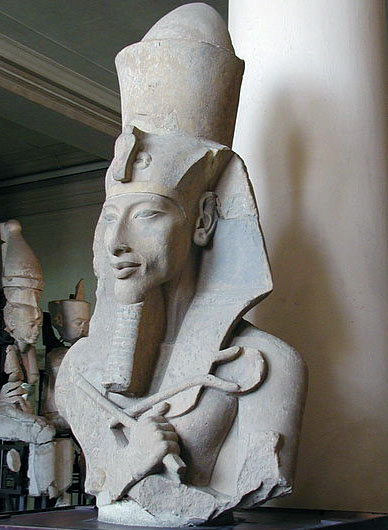


Horemheb was an army commander at Thebes. He was not a supporter of reform. Instead of Amenhotep III administrative tasks took the queen Tiye. Nefertiti disappears from the public in the seventeen year of Akhenaton reign, and under her name appeared co-ruler Nefernefruaten. That might have been Smenkhare (1338th-1336th) or the Queen herself took the throne. Some historians believed that this person did not exist, but under his name, Nefertiti took the throne. Her second disappearance from the public is interpreted by the fact that she gave birth to Tutankhamen.
There is a theory that Nefertiti gave birth to Akhenaton only daughters, while Tutankhamun was his son with other wife Kiya. Because of the systematic destruction of data, which were related to the royal family, her end is not completely clear which leads to many conflicting interpretations. One of those interpretations was that Akhenaton was misunderstood genius of his time, which caused a conflict with Amun clergy by trying to introduce monotheism. There was also a claim that he was a homosexual and degenerate person with disturbed mind. The truth probably we will never know.
Tutankhamun (Tut-ankh-Amun «Living image of Amun») (1336. – 1327.)
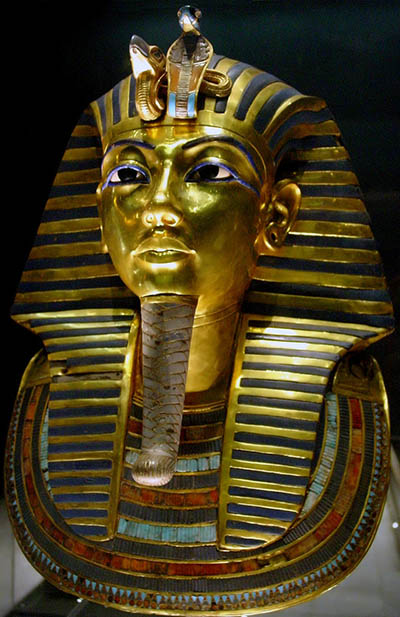


He came on the throne at the age of nine. A change of Pharaoh’s name (from Tutankhaton into Tutankhamun) was clear announcement of the imminent complete fall of Akhenaton religious reform. On May 14th 1338 BC there was a solar eclipse, which “announced” this change. Eclipse is also mentioned in the Hittite annals. Amun clergy barely greeted a fall of Aton‘s cult, and the capital was transferred to Memphis. Although he was quite unimportant figure in Egyptian history, the discovery of Tutankhamun’s tomb made him a symbol of Egypt. He died at the age of 16-17. He was buried in a tomb that had remained hidden beneath the storage, which was used by the workers when they were building the tomb of Ramses VI. Only thanks to this, Tut’s tomb remained untouched until the day when Howard Carter and Earl of Carnarvon found it.
1907. – Theodore Davis found a shallow pit with objects; one of them carried a stamp with the name of Tutankhamun-Nebkheperure. It was concluded that this minor ruler just got a bit modest burial equipment, and later it was thought that these were remains of the feast of eight people.
1922. – Howard Carter (Lord George Herbert Carnarvon funded his search) discovered the door of the tomb which were sealed by a stamp of guards Valley of the Kings.
23th March 1923. – Carter and Carnarvon were the first who entered the tomb and they were impressed by the treasure they found there.
The mummy of Pharaoh was in four shrines and three sarcophagi. On his head was a golden mask, which had lapis lazuli and glass all over. At the head of the mummy was discovered an injury and based on that historians concluded that he died from an injury which was made by an accident. Some historians believed that he might have been killed. The last conclusion is very unlikely because the boy pharaoh was strongly influenced by Amun’s clergy. However, there is a possibility that those who wanted to destroy Akhenaton’s family tree killed him and all trace of his reign. Investigations in 2014, revealed that it was unlikely he had been killed in a chariot accident.
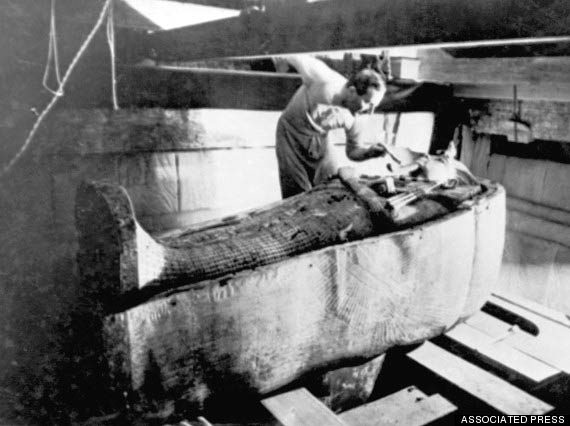


Historians confirmed blood relation of Tutankhamen with the mummy from the tomb T 55 that was destroyed because it obviously belonged to someone from the Akhenaton family or his supporters. The mummy was too damaged to give any other information. The theory says that the mummy belonged to Akhenaton’s second wife Kiya, i.e. Tutankhamun’s mother (according to one theory). After Tutankhamun’s death, his widow Ankhesenpaaten (later Ankhesenamun), daughter of Akhenaton and Nefertiti tried to marry the Hittite prince Zannanza. His father Suppiluliuma I had a doubt for long time about the marriage, but he sent his son to the queen. Zannanza was killed on the way to Egypt. The reasons for his murder had a pretender to the throne, commander Horemheb.
Ay (Aye) (1327 – 1323)
Former head of the stables at Amarna came to the throne as the husband of Queen Ankhesenamone, and he reigned for about four years (he was already old). Some historians believe that he was the son of Amenhotep III or even Tuthmosis IV His death ends a period of Amarna.
Horemheb (1323 – 1295)
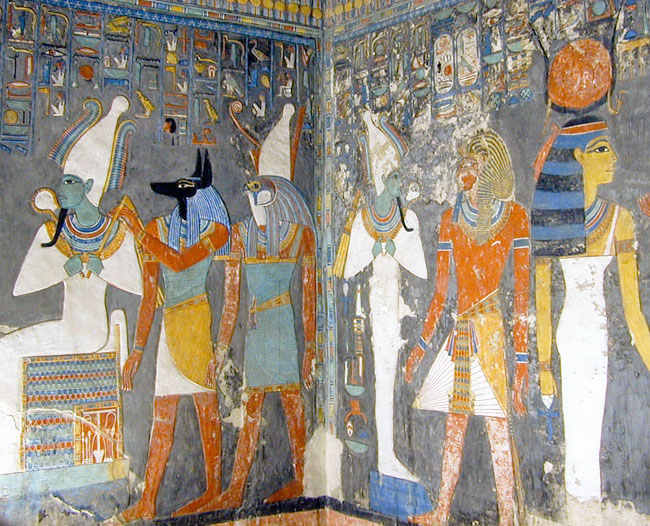


Finally, the elderly commander achieved what he wanted. His wife was Mutnedjemet. She was Nefertiti‘s sister. According to the records, he reigned between 13 and 16 years, and his capital was at Memphis. Most likely, he was at the head of the group that ruled “behind” Tutankhamun ”back”. This group managed to suppress all the things that Tutankhamun’s father had established. Horemheb tried to destroy every Akhenaton reform in order to restore Amun as chief of state God. He ordered a construction on the temple at Karnak (three additional pylons), and probably at that time began the construction of the hypostyle hall. He led wars in Syria and in the south. He reestablished the military power of the state on the model of Tuthmosis I and Tuthmosis III. He is on the list of kings in the temple of Seti I at Abydos, after the cartouche of Amenhotep III, next one was cartouche of Horemheb.
Amarna’ Art
The royal couple became the first motive of the court artist, but Pharaoh is shown in a grotesque form. Some believed that it was his rebellion against the former idealized ruler (a caricature); while others believe that Akhenaton was actually physically ill and so, he was deformed. The characteristic reliefs from Amarna include numerous reliefs on which the royal couple was exposed to Aton’s radiation in the form of the solar disk: anthropomorphic Amun and abstract Aton. He was available to everyone; he was not kept in the dark crypts of the colossal temples. Impact of the Amarna’s art is seen in the tomb of Tutankhamun, Horemheb, and the early Ramesside.
